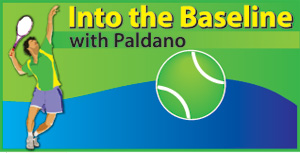Bertens and Djokovic get rich in Madrid
In WTA Tennis, the Top 20 players have, somewhat, the same game plan. If not on the injured list, the difference among them is in their playing form at any given time. Almost every event so far conducted this year had a different winner.
Last week’s Madrid, one of the richest purses outside the Grand-Slam events, which had over US$ 6 million, was won by27-years-old Kiki Bertens of the Netherlands, who beat Simona Halep, to go into the Top 5 in rankings.
Reversing the question, why are good players not winning repeatedly, as it used to be, is worth exploring. The reason Halep could not wrap up the final against Bertens in Madrid, after leading 4-1, was her physical breakdown. It is known she has physical issues.
The best physical shape wins in Tennis. This is the current formula, which is true in Men’s and Women’s Tennis in every country. Right now, in professional Tennis, all top players, returning players and newcomers are having more issues with physical breakdown than their game plan. I believe their game plan is the issue for their physical breakdown.
Sports Intelligence
The ‘Tactical’ approach of the player and ‘Rest’ matters most in prevention of injury. The initial ‘scratch’ towards injury comes from over training. Could it be a team, training to strain with 1000 over bucket fed shots and excess fitness training that lays the foundation for injury? It is not stupid to ask this question anymore. Players must be trained according to their game plans and never too much. ‘Rest’ is the best natural body recovery. Especially if a player is young.
A formula to win with ease is to be tactical. Umpires give points for this. Fist pumping drains players’ mental energy. Umpires do not give any points for these antics. What players need, to win, after mastering the stroke-making skills, is going into tactics and overall strategy for self. For this, the player must become a ‘student’ of the game. The words ‘Sports Intelligence’ must mean a lot to the player.
Western and Eastern Grips
The global grips change from eastern to western and semi western-grips, along with double-handed backhand, more or less sent Net-game players into exile. It came into being during the Swedish domination period of Bjorn Borg and Mats Wilander. For a player who has played 10 years of Tennis with western grips, taking up the Net game, which requires eastern grips, amounts to starting Tennis again.
Western grip Tennis, in a way, reduces the player’s all-court stroke-making ability. The grip demands players to be well behind the baseline. Tactically, western grip stroke-makers go for long rallies, moving many kilometres to cover court. It is also the best formula to strain the body. As they wring the core, a great deal causing shoulder strain and hip injuries.
All-court players, mostly with eastern grip, have more variety and do not over strain to play. While some of the big names of the past with western grips, are walking with their hip replaced, chances are Pete Sampras and Roger Federer will live a normal life. Their injury did not appear before their early 30s, they were just muscular and never skeletal. Martina Navratilova went into her 40s, comfortably. They used eastern grip strokes and had an all court game.
Rare Net-game
In the Men’s Top 100, at the most, there may be 3 who play at Net. Distinctly, Mischa Zevrev, elder brother of World No.4 Alexander Zevrev, is the only one who has a dominant Net game. Among Women, Petra Kvitova is about the most competent Singles Net player. She plans her forays to the Net, while others do so only sporadically, when an extremely easy chance appears.
Djokovic wins Madrid Open
We are accustomed to Nadal, Federer and Djokovic in the final rounds of big events. It is not happening anymore. Dominic Theim has been the consistent name in the last 3 months. The early round matches is draining the top ranked players more than before. Djokovic is hanging in, he is one player who has held the top position for over 250 weeks.
 Djokovic won Madrid with well-calculated early rounds tactics, energy wise. He beat a tired Theim and the tired young Stefanos Tsitsipas in the sem-final and finals, respectively. Thiem beat Federer and Tsitsipas beat Nadal in the previous round.
Djokovic won Madrid with well-calculated early rounds tactics, energy wise. He beat a tired Theim and the tired young Stefanos Tsitsipas in the sem-final and finals, respectively. Thiem beat Federer and Tsitsipas beat Nadal in the previous round.
Late maturity
Tennis is a late maturity sport. In the ATP Rankings 15 of the Top 20 are over 25 years of age,out of which 10 are over 30. The other 5 are between 20 and 23 years of age. These players in the early 20s have no surety of getting to the Top 10.
Two hot names of the just recent past were 27-year-old Grigor Dimitrov, Ranked 48, and 24-year-old Nick Krigios, Ranked 36th. Both players could not innovate their tactical game. They lost too many times, too early in events.
The promising Top 20 ranked Men, who are in their early 20s are German Alexander Zverev, Croatian Borna Coric, Greek Stefanos Tsitsipas, Russians Karan Khachanov and Daniil Medvedev. The most popular places for them to reside are Dubai and Monte Carlo, which give tax havens and good practice partners. The second is the critical need for good Tennis.
- George Paldano, Former int. player; Accredited Coach of German Federation; National coach Sri Lanka & Brunei, Davis-Cup, Federation Cup captain/coach– contact 94 77 544 8880 geodano2015@gmail.com -


